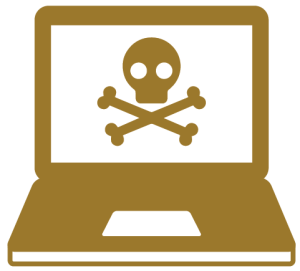
Whether it is a product recall, cyber attack or customer accident, companies work hard to protect their brands. They want to make sure that everything communicated and shared with their marketplace – customers, employees, investors and media – can stand strong through good and bad times.
Most companies know how they want their brands to be perceived in good times, but how a company reacts in a crisis situation can make or break a reputation. Are you prepared to protect your brand?
If there is a product recall or some sort of brand-related situation, customer service and compassion are the two primary factors – first and foremost. A company’s response must include a risk management element that involves analyzing and funding the losses, but it is vital to ensure the customer has the best possible experience no matter what the situation involves. Having a high-end customer service program that handles problems efficiently for your customers in a way that is compassionate to their needs and concerns can turn a potentially negative situation into a positive brand experience.
ENSURING A POSITIVE CUSTOMER EXPERIENCE
An organization has to show compassion toward the situation when a brand-damaging event occurs, whether they directly caused it or were at the center of an unfortunate accident. By being there for their customers, a company can improve retention and loyalty, reduce the noise on social media, reduce litigation – and ultimately retain that relationship.
A company wants to address individual concerns as quickly as possible to avoid exacerbating the situation with communication delays. If customers feel as though their issues are not being addressed, the potential for litigation can increase. Ten years ago, a product recall or other brand-related event had to make the news before we knew about it. In today’s social media culture, it takes only minutes to gain international attention.
When a product recall occurs, it is important to work with an experienced team that can help put a plan in place, settle the claims promptly and help maintain control of the situation. For example, a food manufacturer dealing with a salmonella incident may want to set up specific criteria and an action plan for each type of claim. To ensure claims are settled properly, this may include gathering details such as whether or not the claimant got sick or went to the hospital. The best claim is a closed claim and the best time to settle a claim of this nature is on the first call. A closed claim with a satisfied customer who feels they were treated fairly won’t become a costly litigated claim.
A WORD ABOUT SOCIAL MEDIA
Social media can enhance a brand, but it can also destroy it. Whether addressing a product recall, cyber attack or customer accident, it all boils down to brand protection vs. brand destruction. It is important to closely monitor social media to see if the event is being mentioned and respond to concerns. Some issues may be out of our control, and individuals may not be happy. The good news is a company can control its response to these individuals and turn it into a positive situation.
Having partners that understand the company message and brand protocols – and treat your brand like their own – can make a difference. At Sedgwick, we advocate for our clients, and their employees and customers every day by doing the right thing. We know that when we help a client, our service quality reflects on them. We are not only acting as an extension of their brand – we are helping them protect it.
I look forward to hearing your thoughts on this topic. You may also want to read my previous blog on social media and risk.
Scott Rogers EVP, Casualty Operations, Sedgwick
* This article was originally published in the edge issue 002